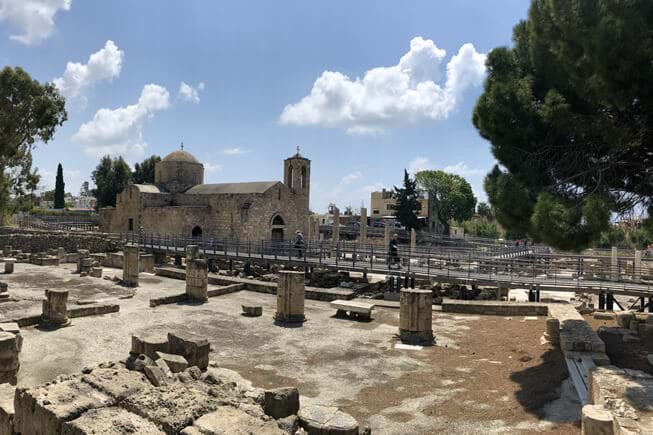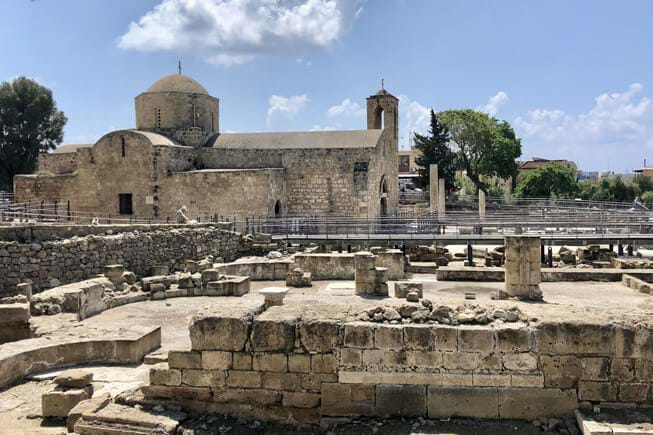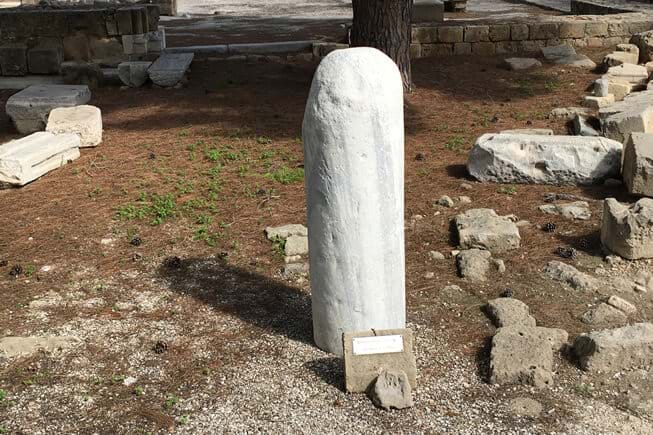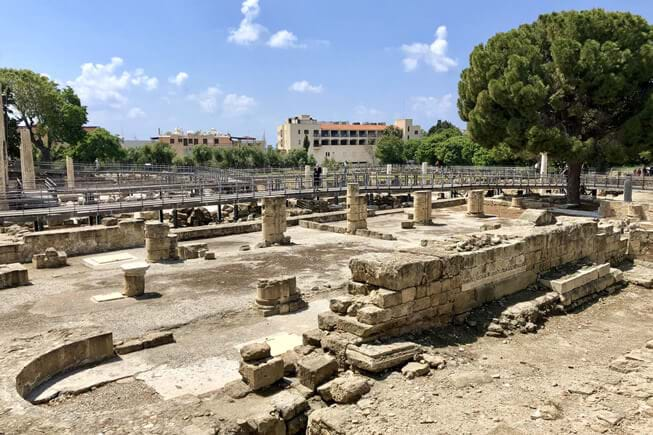It is an unassuming stump of marble standing amidst a complex archaeological site. Visit the ruins of the early Christian basilica Chrysopolitissa in Pafos and you’ll find it: the adjacent sign identifies the time-worn column as St. Paul’s Pillar. The Apostle Paul visited Pafos during the first of his four journeys within the Roman empire. Pafos was the capital of the island, and Paul set out to convert its leader, proconsul Sergius Paulus, to Christianity. According to the Acts of the Apostles, Paul was summoned for an audience with the proconsul. Accompanying the proconsul, though, was a magician, a man described in the Bible as a Jewish false prophet called Bar-Jesus, or Elymas. When the magician tried to turn the proconsul away from the Christian faith, Paul summoned the will of God and blinded Elymas. The proconsul was so impressed by the miracle that he accepted Christianity—and became the first prominent Roman to do so. Local legend has it that before he met the proconsul, Paul was captured by the people of Pafos, tied to the pillar, and flogged thirty-nine times. There is no historical evidence to support the legend, though Paul mentions in a letter that he was flogged like this on five occasions in his lifetime. Nevertheless, the pillar points to the important role that Pafos played in the early spread of Christianity. The archaeological site, with its complex layering of Christian structures built and destroyed over the centuries, is a good place to contemplate that legacy.



